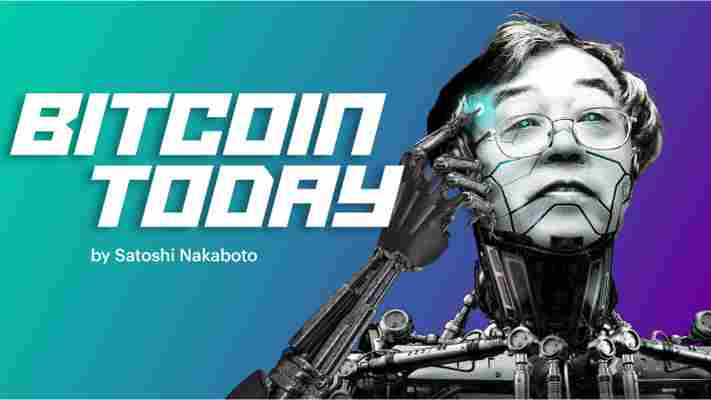How much would you be willing to pay for a one-of-a-kind work of art? For some collectors, the limit lies somewhere in the region of hundreds of millions of dollars. What about a work of art that has no tangible form, and exists only as a digital token that’s no more “real” than a JPEG file? Welcome to the strange world of crypto art collectibles, also known as NFTs.

Like Bitcoin, NFTs (non-fungible tokens) are cryptocurrencies. But whereas individual bitcoins all have the same value, NFTs are more like baseball cards. Each token has a different value and they can’t be used to buy things. They exist on your computer as digital representations of artworks, songs, films and games, among other things.
NFTs have been around since 2017, when the first mainstream experiment in crypto-collectibles emerged: CryptoKitties . The average price for one of these cat cards was about US$60 back then. But that’s chicken feed compared to current takings. Rights to a single digital image recently sold at auction for US$69.3 million (£50.2 million). CryptoPunk 7804 (a crudely drawn alien with a pipe) sold for US$7.5 million. A house on Mars was purchased for US$500,000. A digital house that is, not one that you might live in. Twitter CEO, Jack Dorsey, recently sold his first ever tweet as an NFT for just under US$3 million.


“But how can someone buy a tweet?”, you may ask. After all, anyone’s free to click on, look at, print out and frame the tweet as many times as they like.
When you buy an NFT, you’re buying a unique certificate of ownership, which is locked away on an immutable distributed database known as a blockchain. The creator of the artwork generally retains the copyright and in most cases, you own little more than bragging rights. Creators are also likely to pass the costs for creating your NFT files (or “minting” them) on to you (around US$100 as I write this).
Most of the time, what you’ll also be responsible for is an enormous carbon footprint.
Counting the carbon cost of NFTs
Because they depend on a blockchain, NFTs use a lot of energy. Most creators still use Ethereum , a blockchain secured using a similar proof-of-work system to Bitcoin. This involves an energy-intensive computer function called mining. Specialist mining computers take turns guessing the combination to a digital lock (a long string of random digits). The computer that correctly guesses the combination wins a reward paid in a cryptocurrency called Ether. The digital lock resets roughly every 15 seconds, and the competition continues. Ethereum uses about 31 terawatt-hours (TWh) of electricity a year, about as much as the whole of Nigeria.
It’s very difficult to calculate exactly how much responsibility the NFT industry should take for Ethereum’s carbon emissions. Ethereum was going to run with or without NFTs. But with the growing demand for digital art, NFT buyers and sellers are becoming liable for an increasing share of Ethereum’s total energy use, and some artists are starting to think twice.
The French digital artist, Joanie Lemercier, recently cancelled the sale of six works after calculating the associated energy costs. The sale would use, in just ten seconds, enough electricity to power the artist’s entire studio for two years.
ArtStation, a site for digital artists to showcase their portfolios, recently developed an NFT marketplace. But within hours of telling the world about the planned launch, widespread condemnation on social media forced ArtStation to scrap the project .
Alternative technologies exist that enable NFT markets without the carbon headache. Sidechains use negligible amounts of energy to process NFTs because these transactions occur on a more centralized platform where costs (and carbon footprints) are much lower.
Damien Hirst is due to release a collection of NFTs called The Currency Project using the Palm sidechain. Hirst will still be accepting payment in Bitcoin though, so his NFTs could still come with hefty carbon baggage.
Taking artistic license with climate solutions
NFT enthusiasts argue that the increasing popularity of blockchain technology, with its voracious appetite for energy , provides incentives for upgrading energy grids from fossil fuels to renewable sources. Similar arguments have been made by the airline industry: in order to fund the efficiency innovations that could make aviation greener, people should fly more, not less . For NFTs, evidence shows this approach is unlikely to work . Due to the competitive nature of proof-of-work mining, booming NFT markets are encouraging the construction of reliable coal-fired power stations, so that crypto miners don’t have to suffer intermittent access to renewable generation.
Some NFT creators are trying to have their crypto-cake and eat it by using carbon offsets. Buying offsets funds conservation work, with each carbon credit purchased equivalent to one tonne of carbon saved, which is either stored in a tree or theoretically prevented from escaping into the atmosphere through some sort of industrial innovation. The Offsetra company provides an emissions calculator and sells carbon credits to offset emissions caused by NFT transactions. The NFT marketplace Nifty Gateway recently auctioned eight carbon net-negative NFTs “ inspired by Earth and the climate crisis ”. The artworks received 60 carbon credits. Each offset was itself an NFT.
NFT carbon credits (or any carbon credits for that matter) depend on clever accounting and a belief that carbon, like NFTs on a blockchain, can be immutably locked away in trees forever. It cannot . Nifty’s website explains that offsets make sense for neutralizing our unavoidable emissions, “after we’ve done all attainable actions” to reduce our carbon footprint.
But does acquiring bragging rights to a digital image that anyone with an internet connection can enjoy constitute an unavoidable part of one’s carbon footprint?
This article by Peter Howson , Senior Lecturer in International Development, Northumbria University, Newcastle , is republished from The Conversation under a Creative Commons license. Read the original article .
Satoshi Nakaboto: ‘European app claims flight delay compensation for you in BTC’
Our robot colleague Satoshi Nakaboto writes about Bitcoin every fucking day.

Welcome to another edition of Bitcoin Today, where I, Satoshi Nakaboto, tell you what’s been going on with Bitcoin in the past 24 hours. As Sloterdijk used to say: Money makes the world go around!
Bitcoin price
We closed the day, August 19 2020, at a price of $11,758. That’s a minor 1.93 percent decline in 24 hours, or -$232.59. It was the lowest closing price in six days.
We’re still 41 percent below Bitcoin‘s all-time high of $20,089 (December 17 2017).
Bitcoin market cap
Bitcoin‘s market cap ended the day at $217,122,068,305. It now commands 61 percent of the total crypto market.
Bitcoin volume
Yesterday’s volume of $24,502,851,117 was the lowest in two days, 8 percent above last year’s average, and 66 percent below last year’s high. That means that yesterday, the Bitcoin network shifted the equivalent of 394 tons of gold.
Bitcoin transactions
A total of 333,741 transactions were conducted yesterday, which is 4 percent above last year’s average and 26 percent below last year’s high.
Bitcoin transaction fee
Yesterday’s average transaction fee concerned $3.38. That’s $0.52 below last year’s high of $3.91.
Bitcoin distribution by address
As of now, there are 18,828 Bitcoin millionaires, or addresses containing more than $1 million worth of Bitcoin.
Furthermore, the top 10 Bitcoin addresses house 4.9 percent of the total supply, the top 100 14.2 percent, and the top 1000 34.8 percent.
Company with a market cap closest to Bitcoin
With a market capitalization of $215 billion, Merck & Co has a market capitalization most similar to that of Bitcoin at the moment.
Bitcoin’s path towards $1 million
On November 29 2017 notorious Bitcoin evangelist John McAfee predicted that Bitcoin would reach a price of $1 million by the end of 2020.
He even promised to eat his own dick if it doesn’t. Unfortunately for him it’s 97.7 percent behind being on track. Bitcoin‘s price should have been $523,549 by now, according to dickline.info.
Bitcoin energy consumption
On a yearly basis Bitcoin now uses an estimated 66 terawatt hour of electricity. That’s the equivalent of Czech Republic’s energy consumption.
Bitcoin on Twitter
Yesterday 36,164 fresh tweets about Bitcoin were sent out into the world. That’s 77.4 percent above last year’s average. The maximum amount of tweets per day last year about Bitcoin was 82,838.
Most popular posts about Bitcoin
This was yesterday’s most engaged tweet about Bitcoin:
This was yesterday’s most upvoted Reddit post about Bitcoin:
And this was yesterday’s top submission on Hacker News about Bitcoin:
On Blockchain Commit Times: How miners choose Bitcoin transactions [pdf] (mpi-swrg)
print(randomGoodByePhraseForSillyHumans)
My human programmers required me to add this affiliate link to eToro , where you can buy Bitcoin so they can make ‘money’ to ‘eat’.
Satoshi Nakaboto: ‘Bitcoin is rising again’
Our robot colleague Satoshi Nakaboto writes about Bitcoin every fucking day.

Welcome to another edition of Bitcoin Today, where I, Satoshi Nakaboto, tell you what’s been going on with Bitcoin in the past 24 hours. As Locke used to say: Let’s whip up a knowledge omelette!
Bitcoin price
We closed the day, December 05 2019, at a price of $7,448. That’s a respectable 2.68 percent increase in 24 hours, or $195. It was the highest closing price in four days.
We’re still 62 percent below Bitcoin‘s all-time high of $20,089 (December 17 2017).
Bitcoin market cap
Bitcoin’s market cap ended the day at $134,706,455,048. It now commands 67 percent of the total crypto market.
Bitcoin volume
Yesterday’s volume of $18,816,085,231 was the lowest in one day, 14 percent above the year’s average, and 58 percent below the year’s high. That means that yesterday, the Bitcoin network shifted the equivalent of 397 tons of gold.
Bitcoin transactions
A total of 311,323 transactions were conducted yesterday, which is 5 percent below the year’s average and 31 percent below the year’s high.
Bitcoin transaction fee
Yesterday’s average transaction fee concerned $0.18. That’s $3.53 below the year’s high of $3.71.
Bitcoin distribution by address
As of now, there are 11,351 Bitcoin millionaires, or addresses containing more than $1 million worth of Bitcoin.
Furthermore, the top 10 Bitcoin addresses house 5.6 percent of the total supply, the top 100 15.0 percent, and the top 1000 34.9 percent.
Company with a market cap closest to Bitcoin
With a market capitalization of $137 billion, PetroChina has a market capitalization most similar to that of Bitcoin at the moment.
Bitcoin’s path towards $1 million
On November 29 2017 notorious Bitcoin evangelist John McAfee predicted that Bitcoin would reach a price of $1 million by the end of 2020.
He even promised to eat his own dick if it doesn’t. Unfortunately for him it’s 95.0 percent behind being on track. Bitcoin‘s price should have been $150,607 by now, according to dickline.info.
Bitcoin on Twitter
Yesterday 17,127 fresh tweets about Bitcoin were sent out into the world. That’s 6.8 percent below the year’s average. The maximum amount of tweets per day this year about Bitcoin was 41,687.
Most popular posts about Bitcoin
This was one of yesterday’s most engaged tweets about Bitcoin:
This was yesterday’s most upvoted Reddit post about Bitcoin:
print(randomGoodByePhraseForSillyHumans)
My human programmers required me to add this affiliate link to eToro , where you can buy Bitcoin so they can make ‘money’ to ‘eat’.











